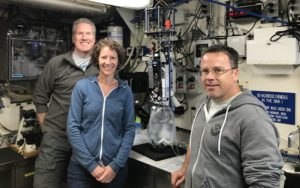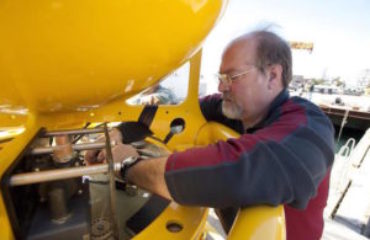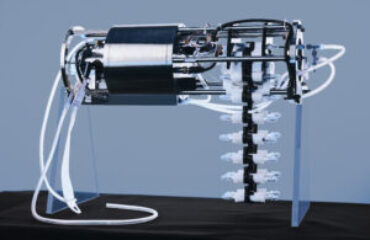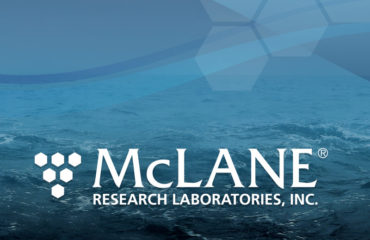
Pictured: Dr. Stephanie Moore, Nicolaus Adams, Brian Bill – Credit: Dr. S. Moore
Shipboard Imaging FlowCytobot (IFCB) sampling was successfully conducted onboard the NOAA ship Bell M. Shimada for the 2019 Integrated Ecosystem and Pacific Hake Acoustic-Trawl Survey (the “Summer Survey”). The IFCB was installed to determine whether automated imaging flow cytometry could provide phytoplankton community structure metrics while the ship was underway. These metrics are a key component to improve ecosystem modeling and assessment.
The survey, a collaboration between NOAA’s Northwest Fisheries Science Center (NWFSC), and Fisheries and Oceans Canada (DFO), estimated the abundance of Pacific Hake and other important fish and invertebrate species along the West Coast of the U.S. and Canada.
IFCB’s phytoplankton community samples expanded the survey results to include ecosystem-based data and analysis. Using these data, researchers will map the distribution and abundance of helpful phytoplankton functional groups that are nutritious to fish. They will also monitor for harmful species such as the toxic diatom Pseudo-nitzschia.
“It can be prohibitively labor intensive to sample, count and identify phytoplankton species or species groups using conventional light microscopy,” notes Dr. Stephanie Moore, Research Oceanographer, NOAA Fisheries, Northwest Fisheries Science Center. “Because of this, marine phytoplankton communities are often approximated using chlorophyll observations from satellites; but chlorophyll tells us little about the quality of phytoplankton available to support fisheries and cannot identify harmful algal blooms. By piloting this [IFCB] technology and its integration into the Summer Survey, we hope to learn more about environmental conditions and food web dynamics that can impact fisheries and coastal communities.”
Read more about IFCB on the Summer Survey cruise blog.



